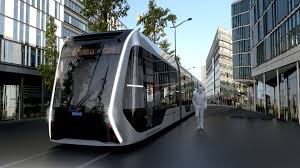The technology powering modern transport has undergone a significant change in recent years. Behind the familiar sight of taxis on UK streets lies an increasingly sophisticated blend of technology that improves efficiency and performance. These advances aren’t just changing how vehicles move – they’re transforming the entire economics of running a taxi service.
Electric and hybrid vehicles have quietly changed the taxi industry. With rising fuel costs and stricter emissions regulations in city centres, drivers are discovering that these eco-friendly alternatives offer compelling benefits. The latest models combine impressive range capabilities with significantly reduced running costs, making them increasingly attractive options for taxi operators across Britain.
What’s interesting is how quickly this technology has matured. Early adopters once faced limited options and practical challenges. Today’s electric and hybrid taxis deliver performance that rivals their traditional counterparts. From regenerative braking systems to rapid-charging capabilities, these vehicles incorporate advancements that were once the stuff of science fiction.
How Electric Taxi Technology Has Evolved Beyond Consumer EVs
The electric taxis operating on UK roads today are more advanced than standard consumer electric vehicles. Providers specialising in hybrid and electric taxis for sale have developed models built specifically for commercial transport. These vehicles feature battery management systems designed for continuous operation.
Commercial electric taxis handle heavy daily use with battery packs tailored for intensive driving. Taxi batteries experience more charge cycles than private cars. Upgraded cooling systems and smart management keep performance consistent throughout the vehicle’s lifetime.
Charging technology in electric taxis includes support for ultra-rapid charging at rates up to 150kW. This allows a taxi to reach 80% battery charge in about 30 minutes. Such quick charging is essential for fleet operations where long stops would reduce business.
Fleet management adds practical benefits through telematics platforms. These systems track battery condition, warn about cell wear, and send charging reminders. Managers can monitor vehicle health, address small issues before breakdowns occur, and schedule charging during low electricity rate periods.
The Smart Systems Powering Modern Hybrid Taxis
Hybrid taxis rely on intelligent energy management to switch between petrol and electric modes.
These systems make quick decisions based on driving conditions. They use electric motors for city traffic and petrol engines for higher speeds or longer routes.
Regenerative braking serves as a key feature in hybrid taxis. When the car slows, energy normally lost as heat converts to electricity for the battery. In city driving with frequent stops, this system improves efficiency and reduces fuel consumption.
Modern hybrids include battery preservation systems that monitor temperature, charge level, and usage patterns. The power system adjusts how it blends electric and petrol drive based on these factors. This management cuts maintenance costs and extends battery life.
Connectivity features allow drivers and managers to track efficiency in real time. Drivers see breakdowns of fuel usage and receive suggestions to improve driving habits. Managers identify trends, spot vehicles using more fuel, and take action through shift adjustments or timely repairs.
How Hybrid Powertrains Adapt to Different Driving Conditions
Hybrid taxis adjust power delivery automatically based on conditions. In slow city traffic, they use the electric motor for low-speed travel. On highways, the petrol engine activates, or both systems work together for smooth acceleration and maximum range.
Weather affects hybrid operation significantly. In cold conditions, the engine runs longer to generate cabin heat and maintain battery temperature. Warmer weather allows more electric-only operation with less petrol consumption.
The Toyota Corolla Hybrid shows this adaptability by learning driver preferences over time. It chooses optimal power blends based on driving style, favouring those who coast and accelerate smoothly for better efficiency.
Some systems also detect passenger loads and adjust power accordingly. This balancing ensures taxis perform consistently regardless of how many passengers are aboard.
Charging Infrastructure Innovations Changing Taxi Operations
Upgraded charging networks now support the growing number of electric taxis across the UK. Projects like the Nottingham City Council’s wireless charging trials allow taxis to recharge while waiting at ranks without cables. This solution addresses a key operational challenge.
Smart grids and off-peak charging help operators reduce costs. Vehicles can recharge overnight during slow periods when electricity rates are lower. This approach prevents downtime during busy hours when taxis need to be on the road.
Battery swap stations offer another option for taxi fleets. Some newer electric models allow drivers to exchange depleted batteries for charged ones in minutes. Mobile charging vans
Future-Ready Technologies in Modern Eco-Friendly Taxis
Modern electric taxis receive software updates wirelessly, similar to smartphones. This allows manufacturers to improve performance, add features, or fix issues without workshop visits. Fleet owners benefit from reduced downtime and access to new capabilities as regulations change.
Modular batteries help protect taxi investments over time. As battery technology advances, operators can upgrade battery units rather than replacing entire vehicles. This approach extends vehicle life and cuts total ownership costs.
Cities like London use connected traffic systems that link taxis to live route updates and parking information. This helps drivers avoid congestion and find available charging points. With parking sensors and navigation sharing data, drivers receive directions to the nearest available spaces.
The Role of Data Analytics in Eco-Friendly Taxi Operations
Data analytics boosts taxi efficiency through smart routing algorithms. These systems suggest energy-saving paths that avoid traffic congestion and steep hills. With platforms like Geotab UK, operators view data on driving patterns and cut wasted miles.
Predictive maintenance uses monitoring to spot potential problems before breakdowns occur. This approach schedules repairs during convenient times rather than during emergencies. Fleet operators can keep vehicles earning revenue with less idle time and lower maintenance costs.
The combination of connectivity, monitoring, and responsive management has become essential for eco-friendly taxi fleets. These technologies work together to improve efficiency and reduce environmental impact while maintaining reliable service.










Recent Comments